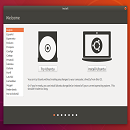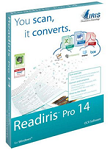1. Overview
The Ubuntu desktop is easy to use, easy to install and includes everything you need to run your organisation, school, home or enterprise. It's also open source, secure, accessible and free to download.

2. Requirements
You'll need to consider the following before starting the installation:
Connect your laptop to a power source.
Ensure you have at least 25GB of free storage space, or 5GB for a minimal installation.
Have access to either a DVD or a USB flash drive containing the version of Ubuntu you want to install.
Make sure you have a recent backup of your data. While it's unlikely that anything will go wrong, you can never be too prepared.
See Installation/System Requirements for more specific details on hardware requirements. We also have several tutorials that explain how to create an Ubuntu DVD or USB flash drive.
3. Boot from DVD
It's easy to install Ubuntu from a DVD. Here's what you need to do:
Put the Ubuntu DVD into your optical/DVD drive.
Restart your computer.
As soon as your computer boots you'll see the welcome window.
4. Boot from USB flash drive
Most computers will boot from USB automatically. Simply insert the USB flash drive and either power on your computer or restart it. You should see the same welcome window we saw in the previous ‘Install from DVD' step, prompting you to choose your language and either install or try the Ubuntu desktop.
If your computer doesn't automatically boot from USB, try holding F12 when your computer first starts. With most machines, this will allow you to select the USB device from a system-specific boot menu.
F12 is the most common key for bringing up your system's boot menu, but Escape, F2 and F10 are common alternatives. If you're unsure, look for a brief message when your system starts - this will often inform you of which key to press to bring up the boot menu.
5. Prepare to install Ubuntu
You will first be asked to select your keyboard layout. If the installer doesn't guess the default layout correctly, use the ‘Detect Keyboard Layout' button to run through a brief configuration procedure.
After selecting Continue you will be asked What apps would you like to install to start with? The two options are ‘Normal installation' and ‘Minimal installation'. The first is the equivalent to the old default bundle of utilities, applications, games and media players - a great launchpad for any Linux installation. The second takes considerably less storage space and allows you to install only what you need.
Beneath the installation-type question are two checkboxes; one to enable updates while installing and another to enable third-party software.
We advise enabling both Download updates and Install third-party software.
Stay connected to the internet so you can get the latest updates while you install Ubuntu.
If you are not connected to the internet, you will be asked to select a wireless network, if available. We advise you to connect during the installation so we can ensure your machine is up to date
6. Allocate drive space
Use the checkboxes to choose whether you'd like to install Ubuntu alongside another operating system, delete your existing operating system and replace it with Ubuntu, or — if you're an advanced user — choose the 'Something else' option.
7. Begin installation
After configuring storage, click on the ‘Install Now' button. A small pane will appear with an overview of the storage options you've chosen, with the chance to go back if the details are incorrect.
Click Continue to fix those changes in place and start the installation process.
8. Select your location
If you are connected to the internet, your location will be detected automatically. Check your location is correct and click 'Forward' to proceed.
If you're unsure of your time zone, type the name of a local town or city or use the map to select your location.
9. Login details
Enter your name and the installer will automatically suggest a computer name and username. These can easily be changed if you prefer. The computer name is how your computer will appear on the network, while your username will be your login and account name.
Next, enter a strong password. The installer will let you know if it's too weak.
You can also choose to enable automatic login and home folder encryption. If your machine is portable, we recommend keeping automatic login disabled and enabling encryption. This should stop people accessing your personal files if the machine is lost or stolen.
10. Background installation
The installer will now complete in the background while the installation window teaches you a little about how awesome Ubuntu is. Depending on the speed of your machine and network connection, installation should only take a few minutes.
11. Installation complete
After everything has been installed and configured, a small window will appear asking you to restart your machine. Click on Restart Now and remove either the DVD or USB flash drive when prompted. If you initiated the installation while testing the desktop, you also get the option to continue testing.


 Powerpoint 2016 Pro 64bit
1,531
Powerpoint 2016 Pro 64bit
1,531
 Excel 2016 (Pro 64bit)
1,623
Excel 2016 (Pro 64bit)
1,623
 Word 2016 (Pro 64bit)
2,477
Word 2016 (Pro 64bit)
2,477
 Adobe Reader 11.0.23
4,230
Adobe Reader 11.0.23
4,230
 Debut Video Capture Software free downlad online full version
3,413
Debut Video Capture Software free downlad online full version
3,413
 Free online slideshow maker with music and effects dowload free
4,194
Free online slideshow maker with music and effects dowload free
4,194
 Dowload microsoft office 2010 professional product key full crack
6,884
Dowload microsoft office 2010 professional product key full crack
6,884
 Snipping Tool++ online - Free download snipping tool windows 10, 7, 8
20,902
Snipping Tool++ online - Free download snipping tool windows 10, 7, 8
20,902
 PDF Reader allows you to open and view any pdf file
3,053
PDF Reader allows you to open and view any pdf file
3,053
 Microsoft word 2010 is installes on virtually every computer
2,785
Microsoft word 2010 is installes on virtually every computer
2,785
 Microsoft office 2010 debuted a collection of web-based versions
4,878
Microsoft office 2010 debuted a collection of web-based versions
4,878
 Microsoft Office 2011 home, business installation instructions
4,789
Microsoft Office 2011 home, business installation instructions
4,789
 Microsoft Office 2013 Professional Plus 15.0.4454.1002
6,458
Microsoft Office 2013 Professional Plus 15.0.4454.1002
6,458
 Foxit Reader 7.3.4.0311 - Read, edit and create PDF files for free
2,977
Foxit Reader 7.3.4.0311 - Read, edit and create PDF files for free
2,977
 Adobe Reader XI 11.0.10 - Tools best PDF reading
3,443
Adobe Reader XI 11.0.10 - Tools best PDF reading
3,443
 Free Webcam Recorder - Free download and software reviews
2,523
Free Webcam Recorder - Free download and software reviews
2,523
 Readiris Pro - Free download and software reviews
2,894
Readiris Pro - Free download and software reviews
2,894
 Gantt Chart Template for Excel - Free download and software reviews
3,958
Gantt Chart Template for Excel - Free download and software reviews
3,958
 Universal Document Converter - Free download and software reviews
2,755
Universal Document Converter - Free download and software reviews
2,755
 Soda PDF 3D Reader - Free download and software reviews
2,937
Soda PDF 3D Reader - Free download and software reviews
2,937
 Google Chrome Free...
166871
Google Chrome Free...
166871
 MathType 6.9a -...
79649
MathType 6.9a -...
79649
 Zalo for PC
29592
Zalo for PC
29592
 Beach Head 2002 -...
25769
Beach Head 2002 -...
25769
 iBackupBot - Free...
22625
iBackupBot - Free...
22625
 AnonymoX 2.0.2 -...
22211
AnonymoX 2.0.2 -...
22211
 Age of Empires 1.0
17079
Age of Empires 1.0
17079
 Realtek AC97 Audio...
16538
Realtek AC97 Audio...
16538
 Citrio...
14576
Citrio...
14576